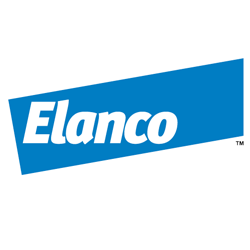Leptospirosis
Vaccination for the prevention of leptospirosis should be strongly considered for most dogs in North America as the disease can be life-threatening, is endemic in much of the continent, and is zoonotic. In addition to protection from disease, vaccination may be necessary to meet state or international requirements for importation and transport of dogs.
Leptospirosis is a bacterial infection caused by spirochetes in the genus Leptospira, including L interrogans and L kirschneri. Surface antigens delineate multiple different serovars, with the predominant disease-associated serovars varying with geographic location and over time. In the past, L interrogans serovars Canicola and Icterohemorrhagiae were predominant in North American dogs, and vaccines for these serovars have been available since the 1960s.26 In more recent years, L interrogans serovars Pomona, Bratislava, and Autumnalis and L kirschneri serovar Grippotyphosa have emerged as important canine pathogens.27 Quadrivalent vaccines for use in North America now include the addition of serovars Pomona and Grippotyphosa bacterins. The Task Force recommends the use of the 4-serovar vaccines for protection against the most relevant pathogens because vaccines induce only partial or no immunity to heterologous serogroups.28,29
Most leptospiral vaccines are adjuvanted, killed whole-cell bacterins, but nonadjuvanted bacterin vaccines have been marketed more recently.28,30 As is typical for bacterin vaccines, annual boosters are required, with DOI shown for various vaccine serovars ranging from 12 to 18 mo.30–35
Most dogs in North America should be considered at risk of leptospirosis. Historically, the disease was most common in largebreed dogs with rural outdoor exposure. This is no longer true. Small-breed dogs are frequently infected, perhaps because of urban and suburban exposure of dogs to wildlife reservoirs including rodents.36,37 Dogs of any age, breed, or sex can be infected.38 Leptospirosis occurs throughout North America, and while often associated with exposure to water, infection is well documented in arid regions such as Arizona.38 Risk factors for leptospirosis include dogs spending any time outdoors (including urban, suburban, and rural environments), exposure to rodents, and time in kennels or dog daycares.37–39
Vaccination against leptospirosis can induce antibodies that may lead to false-positive serologic tests meant for disease diagnosis. Both microscopic agglutination tests and point-of-care serologic assays are impacted by this effect.40–45 Fortunately, this becomes less important in light of the fact that clinical disease is unlikely in vaccinated dogs. Vaccination does not result in positive real-time polymerase chain reaction test results.43
Leptospirosis is an important zoonotic pathogen.46 Although there is little evidence of direct human infection from dogs, greater canine exposure to contaminated environments and close contact with people may link environmental sources to humans.47–49 Newer vaccines have been documented to dramatically reduce or prevent renal carriage and urinary shedding of leptospires from exposed dogs, potentially protecting humans even if indirectly.27,32,35,50,51
Historically, veterinarians have been concerned about adverse reactions to leptospiral vaccines.52–54 Vaccine formulations have now been altered to minimize the likelihood of such reactions. Based on available information, adverse reactions to leptospiral vaccines seem to be rare, with <53 adverse events per 10,000 doses.53,54 Most adverse reactions are minor, and serious anaphylactic reactions were reported no more often for dogs given leptospiral vaccines than for other vaccine antigens. Nevertheless, adverse reactions of any type are more likely in smaller and younger dogs.53 For this reason, the Task Force suggests that the initial dose be administered at or after 12 wk of age. Other measures to mitigate adverse reactions include minimizing the number of different vaccines administered at a single visit and following manufacturers recommendations, such as allowing a vaccine to reach room temperature before injection.54







